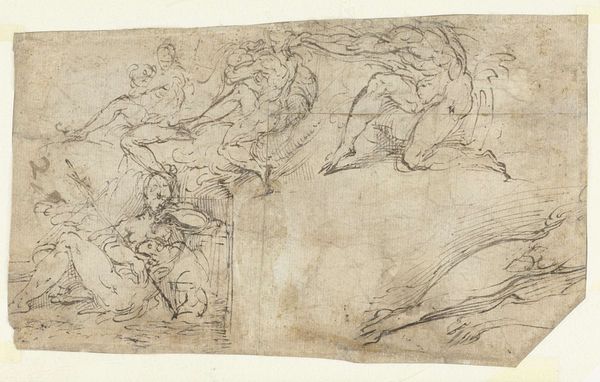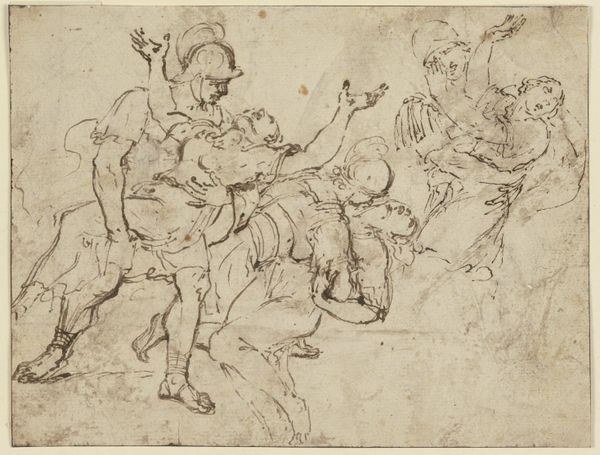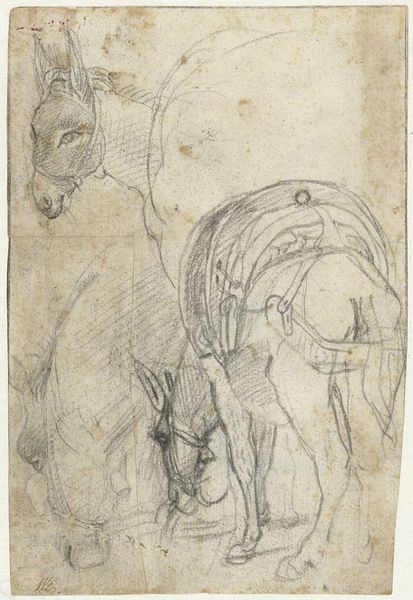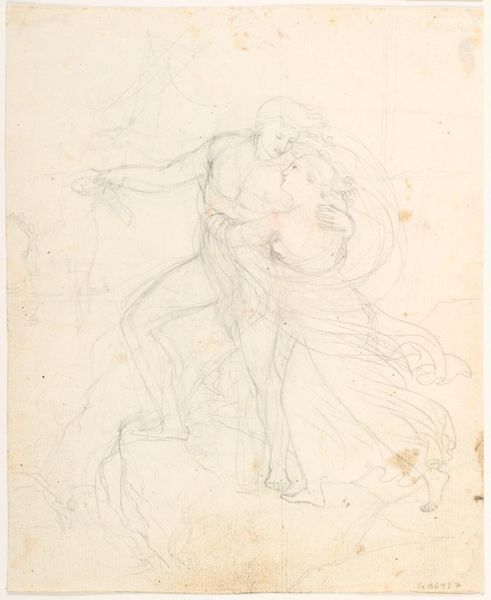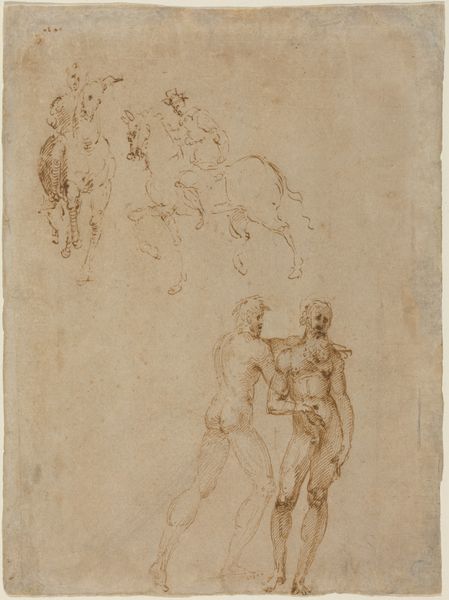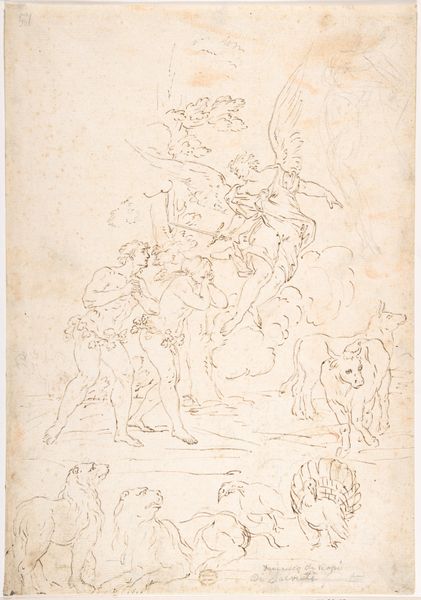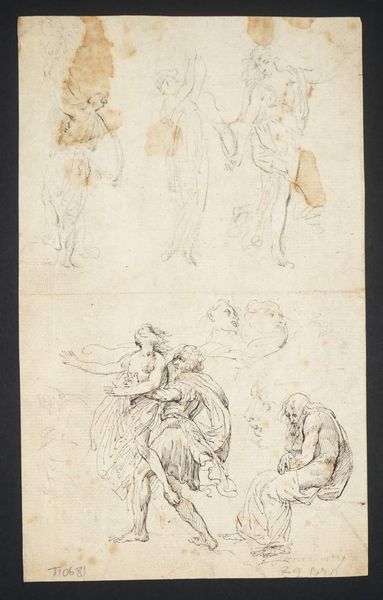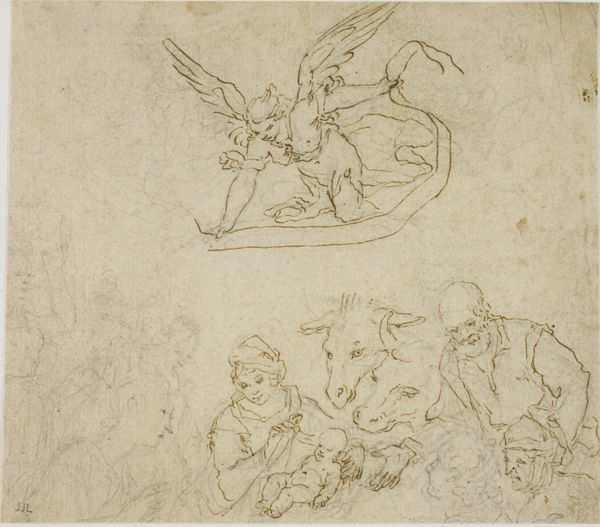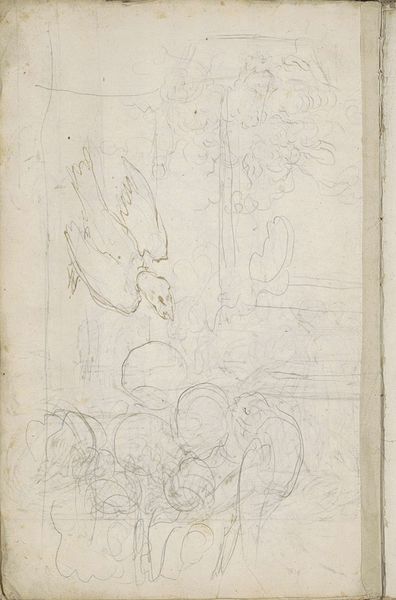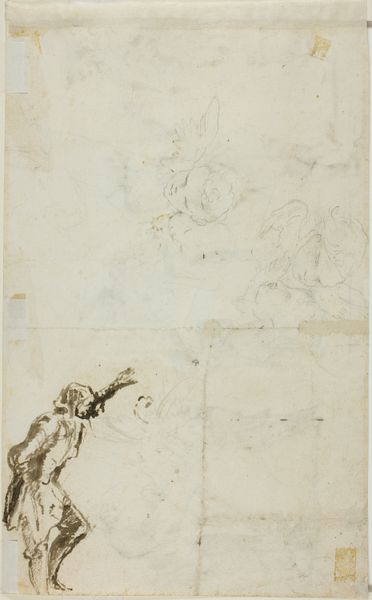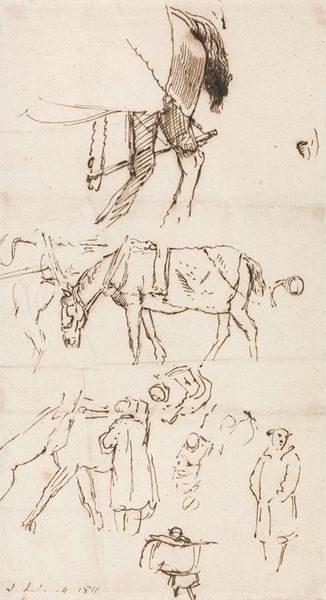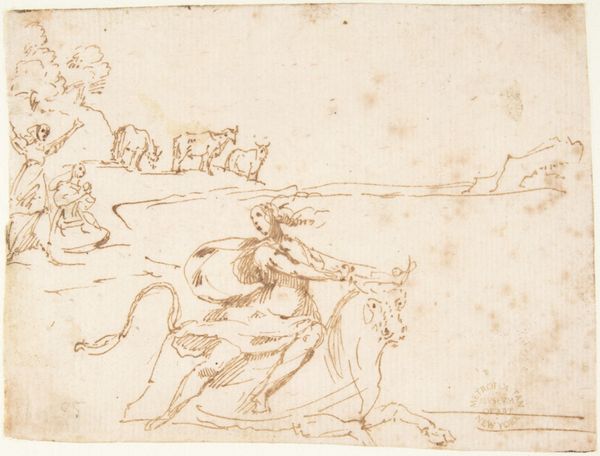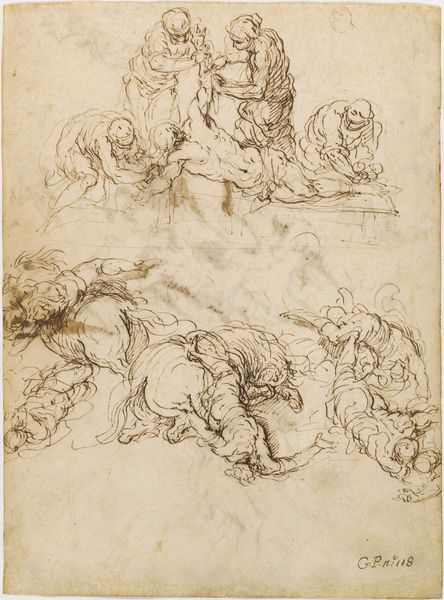
Dimensions: support: 455 x 324 mm
Copyright: CC-BY-NC-ND 4.0 DEED, Photo: Tate
Curator: This drawing, titled *Skeletons and Ecorchés,* is by John Hamilton Mortimer. He made it sometime in the 1770s and it's now part of the Tate collection. Editor: Oh, wow, the image just pulses with energy, even though it's a study of exposed muscle and bone. I find it strangely moving. Curator: It's a drawing meant to teach anatomy, to show the body stripped bare. But Mortimer wasn't just interested in scientific accuracy. Editor: No, there's a real drama here. These figures aren't static. They're alive, or at least were. It's about more than just the skin and bones. Curator: Absolutely, it’s a perfect example of how art schools encouraged students to draw figures without skin. Editor: Well, it's certainly gotten under mine. It’s fascinating how a drawing of death can feel so full of life.
Comments
tate 8 months ago
⋮
http://www.tate.org.uk/art/artworks/mortimer-skeletons-and-ecorches-t09121
Join the conversation
Join millions of artists and users on Artera today and experience the ultimate creative platform.
tate 8 months ago
⋮
Mortimer was one of the most gifted draughtsmen of his generation. Here he has sketched an imaginary battle between flayed human figures, or 'ecorchés'. The battle is repeated below in skeletal form. According to a contemporary, Mortimer was able to draw a compleat skeleton of the human figure, in the most difficult attitude that could be devised, & begin at the heel; & then, with different coloured ink, he would clothe it in muscles,¿ & begin them at the same part; but what was still more amazing, he never altered a line. Gallery label, September 2004
